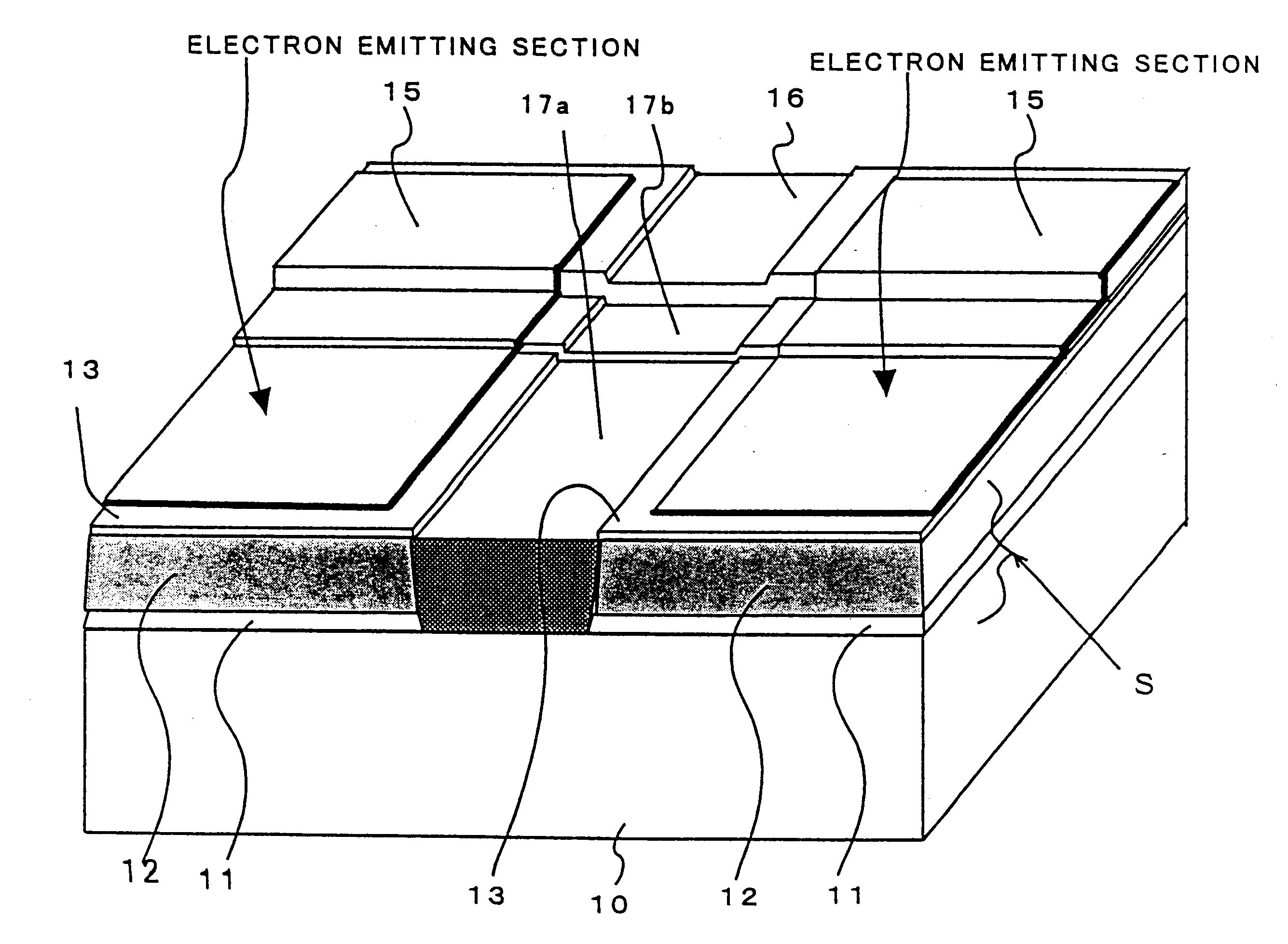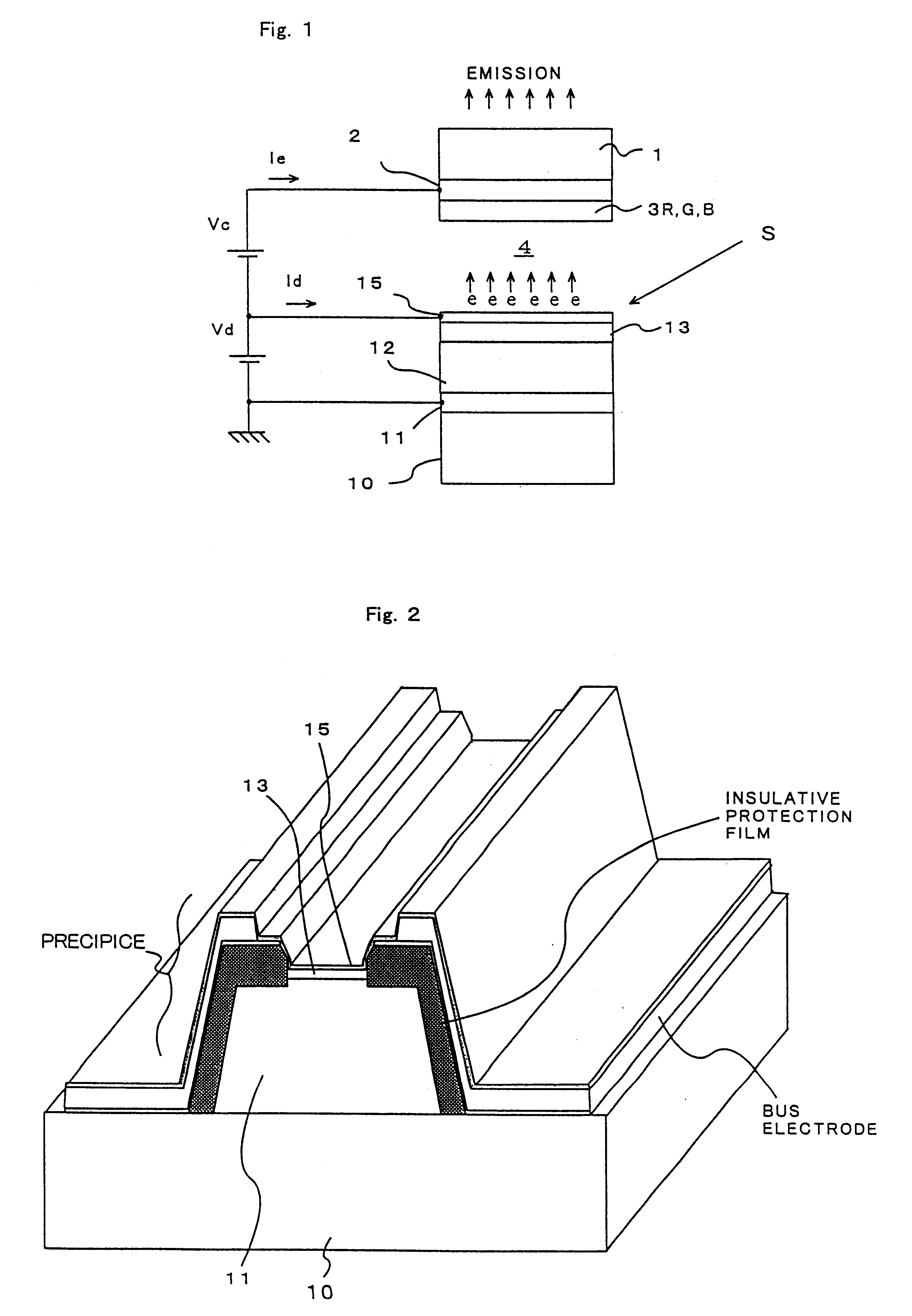Flat panel display device utilizing electron emission devices
a technology of electron emission and display device, which is applied in the manufacture of electric discharge tube/lamp, tubes with screens, discharge tubes luminescnet screens, etc., can solve the problems of high risk of bus electrode breakage, drawback of destruction of top electrode, and very thick insulator layer, and achieve stable electron emission without deterioration
- Summary
- Abstract
- Description
- Claims
- Application Information
AI Technical Summary
Benefits of technology
Problems solved by technology
Method used
Image
Examples
Embodiment Construction
flat panel display device was actually fabricated with specifications (1) through (6) as shown below, and then characteristics of the same were examined.
(1) Bottom electrodes: Cr, Cu, and Cr films having thicknesses of 50 nm, 1 .mu.m, and 100 nm, respectively.
(2) Semiconductor electron supply layer: Si layer having a thickness of 4 .mu.m.
(3) Insulator layer: SiO.sub.x layer having a thickness of 330 nm.
(4) Top electrode: Pt film having a thickness of 40 nm.
(5) Bus electrodes: Cr, Cu, and Cr films having thicknesses of 50 nm, 1 .mu.m, and 100 nm, respectively.
(6) Insulating protective films to be under the bus electrode: SiO.sub.x films having a thickness of 350 nm.
The bottom electrodes (1) and semiconductor electron supply layers (2) were formed in the form of lines on a glass substrate which had been cleaned. Thereafter, the first insulating protective films to be under the bus electrode (6) were formed between the lines. Next, the insulator layers (3) were formed on the semiconduc...
PUM
 Login to View More
Login to View More Abstract
Description
Claims
Application Information
 Login to View More
Login to View More - R&D
- Intellectual Property
- Life Sciences
- Materials
- Tech Scout
- Unparalleled Data Quality
- Higher Quality Content
- 60% Fewer Hallucinations
Browse by: Latest US Patents, China's latest patents, Technical Efficacy Thesaurus, Application Domain, Technology Topic, Popular Technical Reports.
© 2025 PatSnap. All rights reserved.Legal|Privacy policy|Modern Slavery Act Transparency Statement|Sitemap|About US| Contact US: help@patsnap.com



